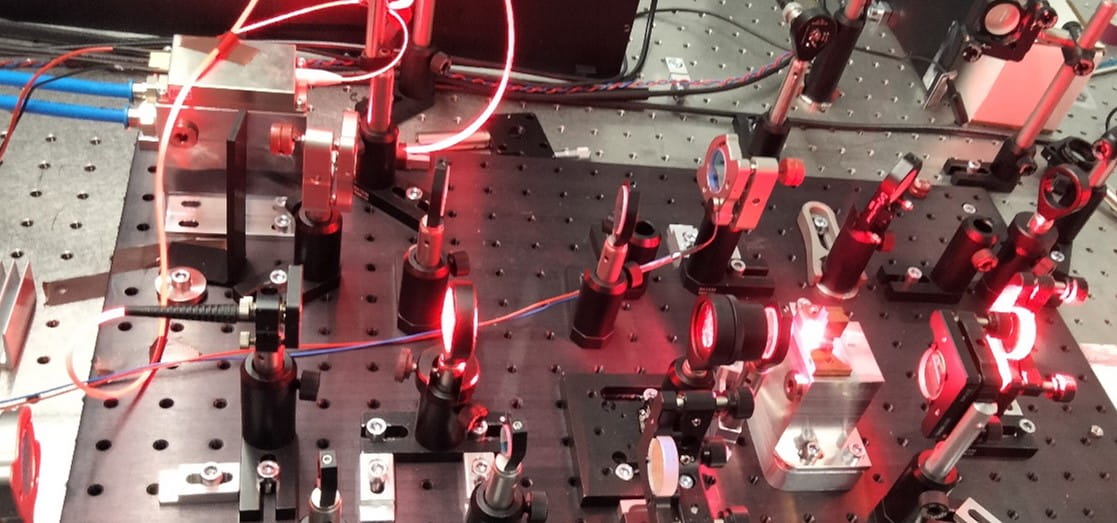Multi-Cellular Tissue Assembly with Holographic Optical Tweezers Based on Diffractive Nano-Optics and Femtosecond Red Diode Pumped Alexandrite Laser – NanoFemto Tweezers:
Medical treatments often have undesired side effects, and their effectiveness varies from patient to patient. Recent approaches in personalized medicine, such as assay on organoids from patient own cells, aim to tackle this challenge. However, the assessment of side effect on other organs as well as the therapeutic impact of their metabolic interplay call for the combination of several organs-on-chip, i.e., body-on-chip. The fabrication of such spatially tight systems requires the ability to assemble several cell types at micrometric resolution, which current biofabrication methods lack.
Holographic optical tweezer assembly offers sub-micrometer precision and therefore, has recently regained attractivity in biofabrication. Gentler laser traps are however necessary to reduce cell damage. Accordingly, this project aims to create an optical tweezer setup based on femtosecond lasers to reduce heat transfer to cells as well as custom diffractive nano optical elements to generate tailored holographic trapping fields for maximal trapping efficacy.
Moreover, based on red laser diodes exploiting the excellent low-quantum defect pumping of alexandrite lasers, the novel femtosecond laser will have a simpler design and therefore much lower cost. Such efficient, reliable, and low-cost lasers are critical for optical tweezers, multi-photon microscopy, but also highly desirable in multiple other applications.
High rep rate femtosecond lasers for high throughput micromachining – GigaMicro:
The project goal is to develop a high repetition rate (GHz) and high power (>100W) femtosecond laser and demonstrate new applications in material processing. Our game changer USP fiber laser GIGAMICRO will have up to 1000 times HIGHER PROCESSING SPEED ABILITY while MAINTAINING HIGH PRECISION within manufacturing operations. Also, GIGAMICRO laser can be integrated into mass production easily.
Today, there are two bottle necks – scanner speed and average power. Our developed booster system will enable us to increase the average power up to 100 Watt and the frequency of bursts up to 1 MHz in burst mode or 1 GHz in uniform repetition rate with still low pulse energies on the order of nJs. These specs will be perfect for continuous ablation-cooled material removal, and we expect at least an order of magnitude improvement (10mm3/s) in micromachining speed compared to current state-of-the-art. We will apply the prototype laser for machining of different materials for different applications and engraving with different scanning patterns.
Nanomachining with novel low cost, compact sub-100 fs TiSa laser amplifier – NanoLase:
The workhorse for most of demanding laser applications are femtosecond lasers based on Titanium doped Sapphire (TiSa) gain medium. The main drawback up to now is the absence of direct diode pumping scheme enforcing the use of Q-switched, nanosecond solid-state laser (e.g Nd:YAG) as pump laser source. This leads to very inefficient optical pumping and a large purchasing and maintenance cost for such systems, the later prohibiting the spread of TiSa lasers in wider industrial applications.
In this project, we aim to develop a high average power, 100-µJ energy level, sub-100fs TiSa laser amplifier, based first, on recently available blue diodes at 445 nm, and second, on a novel Single Crystal Fiber (SCF) geometry. The SCF geometry will increase couple of times the laser average power, due to superior cooling capability. The direct diode pumping will increase wall-plug efficiency by ~10 times (wall-plug efficiency ~5% versus typical ~0.5%). It will also make the laser much more compact and reliable.
In addition, we will design a wavelength conversion stage (second harmonic generation – SHG) to obtain blue fs pulse at 400 nm. We will perform first material processing tests with this novel laser with blue beam suitable for metal nanomachining and IR for polymers. Couple of times shorter pulses, compared to currently commercially available, and high-power blue lasers, should enable us to make a breakthrough in laser materials processing and move from micro to nanomachining, with high throughput.
Industrial high rep-rate ultrafast lasers:
Over the last two decades ultrafast laser systems have been revolutionizing the way of how
we consider light and they have been making enormous progresses in fields like medicine or
micromachining. While most laser companies are selling systems with repetition-rate from single-shot to 100 MHz, our target is the explore the 0.5-2.5 GHz regime. Exploring the new rep rate regime is a key to fulfill a growing demand for this type of lasers for cold-ablation, metrology, sensing or THz generation. Producing this laser is however not trivial because the laser cavity scales inversely with the repetition rate, making everything smaller and more sensitive to external perturbations and mechanical variations. While multiple scientific publications reported such developments, only a few companies have tried to commercialize such system and none of them produced a reliable solution. This project aims to address this problem by focusing on the optomechanical design and assembly of reliable and robust ultrafast lasers at 1 micron emission wavelength, with tunable 0.5-2.5 GHz pulse repetition rate. The success of this project is demonstrated in an elegant prototype laser depicted below.



